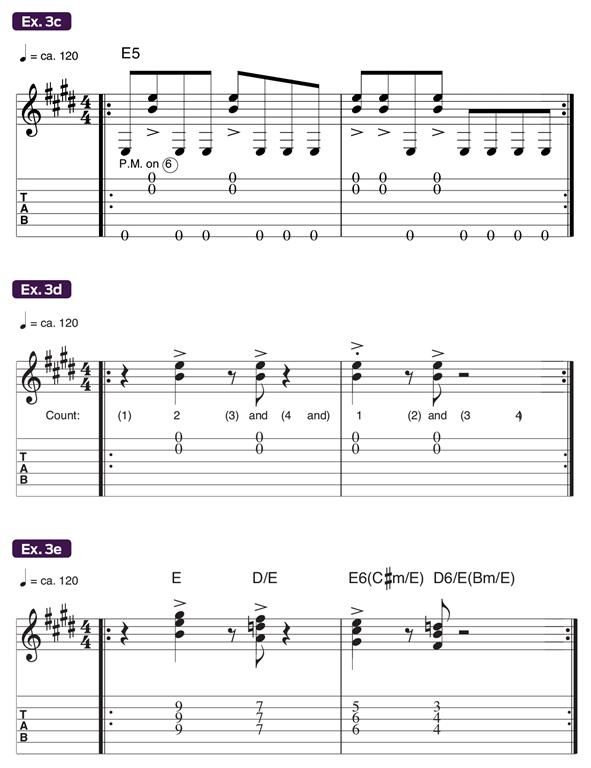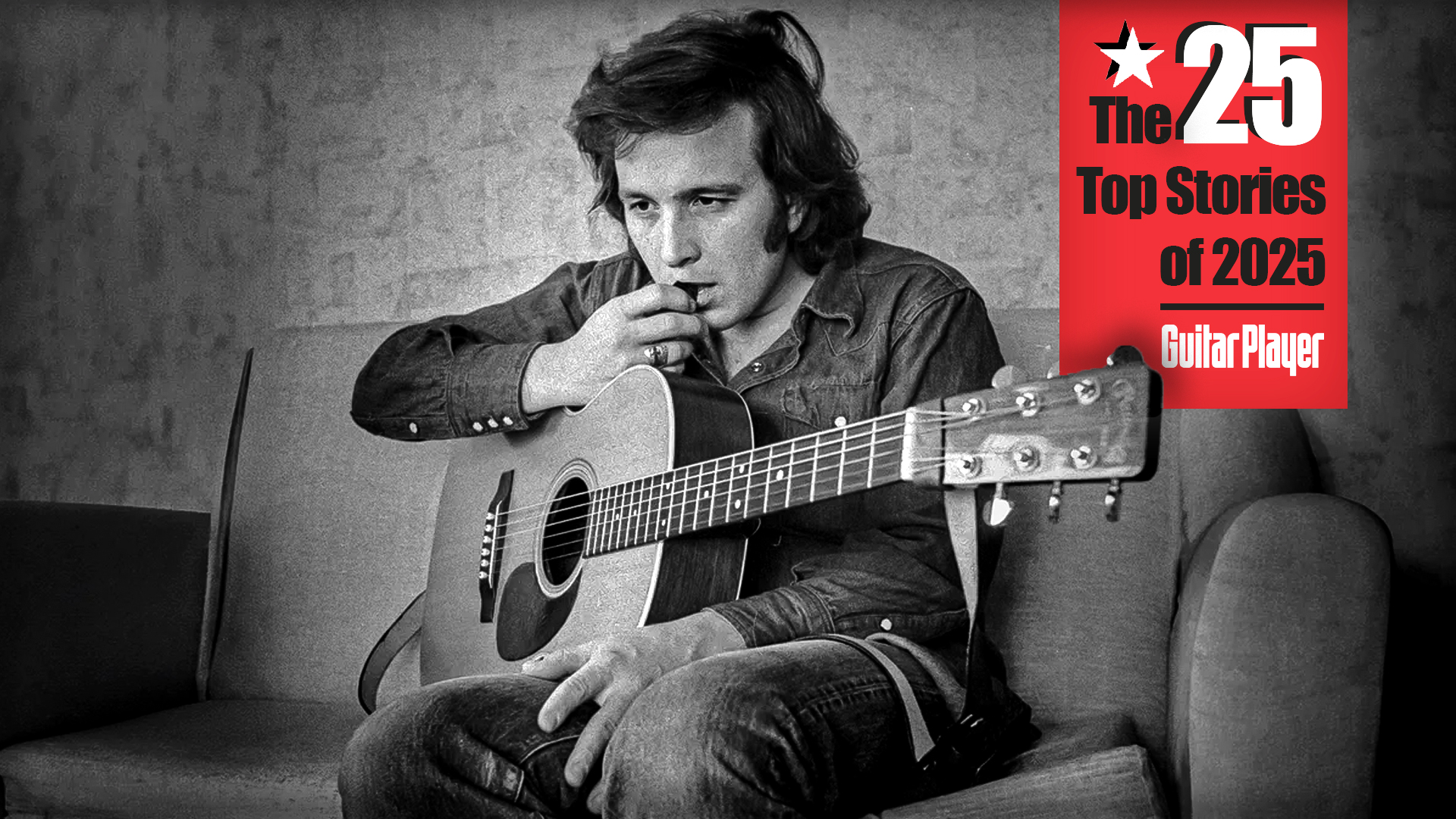Master the Basics of Rhythm Guitar
Take your first step toward crafting cagey and masterful rhythm figures in a wide range of musical styles.

"Hey, man, do you play lead or rhythm?" It’s an annoying question that has plagued guitarists for more than a half century. And while not exactly derogatory, it’s certainly misleading. Why? Well, all music relies on dividing time into rhythms to glue together its other two main elements: melody and harmony.
“Rhythm guitar,” which is actually the application of all three elements to the instrument, typically manifests as chord- or riff-based accompaniment figures played behind a vocalist or featured instrumentalist, and, unless you’re flying solo, it’s all about being supportive and meshing with the ensemble.
This series of columns is intended to help you craft cagey and masterful rhythm figures in a wide range of musical styles. So where to begin? Let’s kick it off by reviewing some important rhythm basics.
Divide And Conquer
The basic unit of rhythmic measurement is the beat, and equally divided repeated beats are clocked by their frequency in beats per minute (bpm) to create different tempos.
For example, one beat per second equals 60 bpm, two per second equals 120 bpm, and so on. Any single beat can be equally divided, and Ex. 1 illustrates the subdivisions of a single quarter-note, from two to eight events per beat, plus their corresponding rests, or silent equivalents. Let’s get to know some of them.

Set Your Internal Clock
In order to count and play time, you have to feel time. Time is not something you hop on and ride – you have to generate it and be able to synchronize your internal clock to any tempo.
You can tap a foot (heel or toe), bob your head, rock your entire body, vocalize clicks or grunts, or count out loud – whatever locks you to the tempo. Concentrate on the downbeats and use the silent (or played) upbeat occurring halfway through each beat as a point of reference. This will decrease the tendency to rush or lag behind the tempo. Lock in and keep it clock-steady.
All the latest guitar news, interviews, lessons, reviews, deals and more, direct to your inbox!
Next, you must feel the meter designated by the time signature. Written as fractions, time signatures divide a constant flow of metronomic beats into equal or unequal groupings called “measures” or “bars.”
The numerator designates how many beats are in each measure, and the denominator dictates which type of note receives one beat. A measure of time can contain either an even or odd number of beats.
For example, 4/4 – or common time – designates four beats per bar with the quarter-note as the basic unit of beat measurement, while 2/4 and 3/4 share the same quarter-note pulse, but with two and three beats to the bar, respectively.

Now, using a metronome or drum machine, establish a comfortable tempo and simultaneously tap, clap, and count the basic 4/4 rhythms in Ex. 2, repeating each one at least four times before moving on.
Accent the downbeats (especially the almighty “one”) to help steady your groove as each measure subdivides. (Tip: try adapting Ex. 2 to 3/4.) After you can comfortably navigate each bar, grab your guitar and replace the claps with muted-string “chicks,” single-notes, double-stops, full chords, or whatever floats your rhythmic boat.
Enter: The Eighth Note
Many a cool rhythm figure has emerged from a steady stream of repeated eighth-notes. You can chunk away à la Ric Ocasek and Elliot Easton, but the fun really begins when you start inserting rests and different notes or chords to create counter lines and rhythms.
Combine the muted open-E bass notes in Ex. 3a with the upbeat-heavy open E5s in Ex. 3b, and see if the result shown in Ex. 3c bangs a gong, err…I mean rings a bell. You can do the same with Ex. 3d, which simply shifts each hit in bar 1 ahead by one eighth-note.

Finally, in Ex. 3e, we replace Ex. 3d’s E5 hits with descending E, D, C#m, and Bm triads – all played over Ex. 3a’s E pedal – bringing to mind flashes of songs as diverse as “Good Day Sunshine” (the Beatles), “Struttin’ with Sunshine” (Larry Coryell’s Eleventh House), and “Under the Ice” (Nazz). Rock on!

